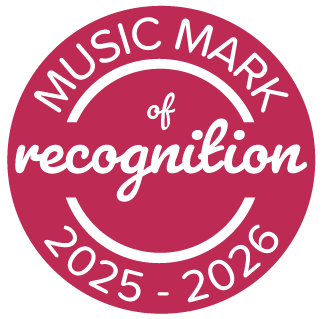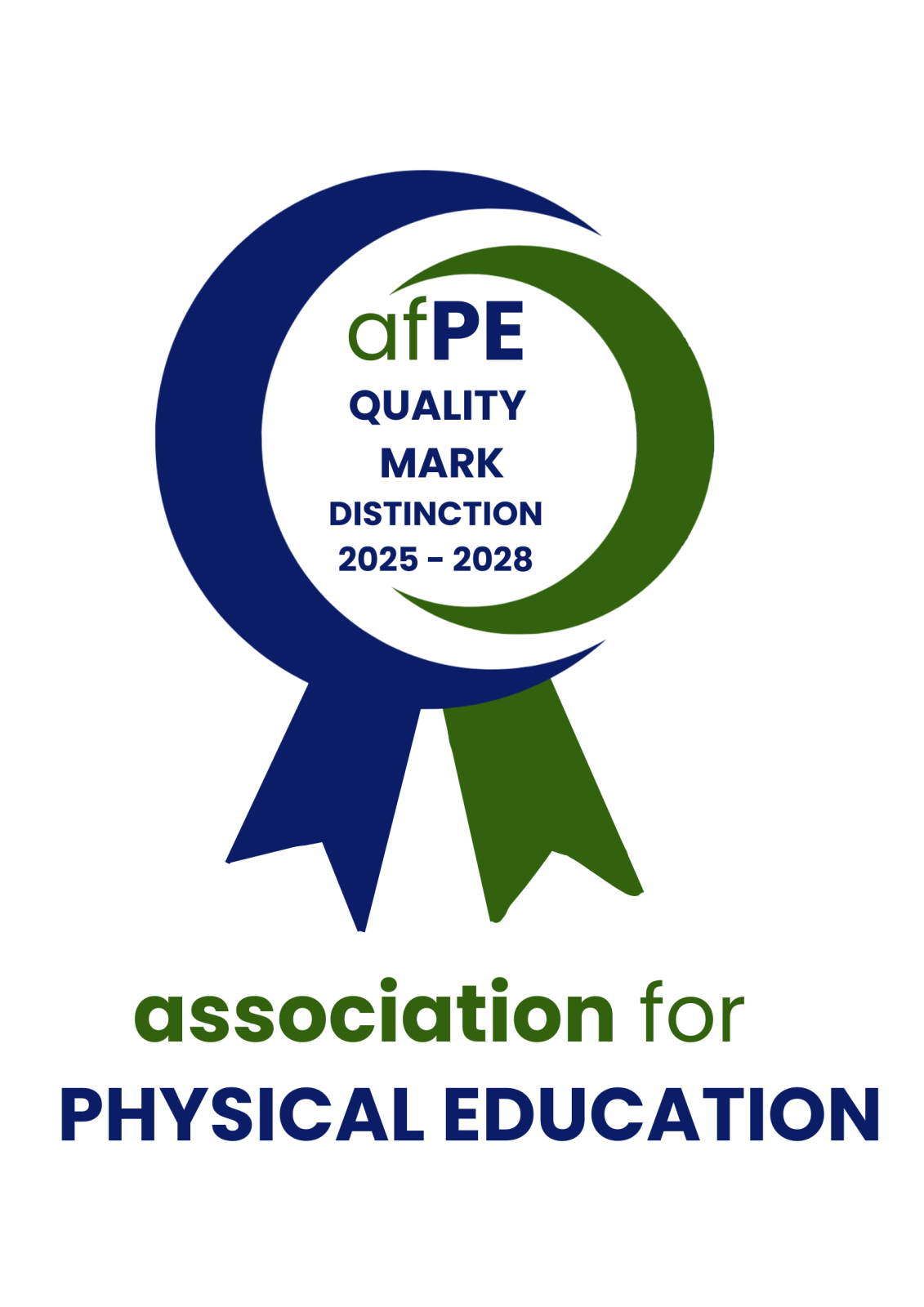English
English Statement
Muswell Hill Primary School’s vision for English is that each child will be confident in reading and able to effectively communicate their ideas and emotions, both orally and in writing. We want every child to be an enthusiastic, confident learner of English and to be equipped with the skills and know-how to achieve their very best.
We achieve this with a carefully planned curriculum across the whole school and by selecting high-quality, rich, engaging texts that link to areas of learning throughout the curriculum. Please click here to view our curriculum.
Writing
We plan a sequence of lessons based on a high-quality text. Sources and lesson ideas include the use of CLPE’s the Power of Reading, Just Imagine and a Talk for Writing approach. Great emphasis is placed on the importance of developing vocabulary. Drama and oracy are integral to lesson planning to develop oracy, speaking and listening skills. The lesson sequence incorporates short writing tasks and activities that build to a longer, sustained piece of writing.
- Grammar is taught with a mix of teaching through the context of the unit text and discrete stand-alone lessons.
- Handwriting is taught separately, modelled and regularly practiced.
- Spelling is discretely taught, tested weekly (informally in KS1) and assessed to identify difficulties and provide appropriate support.
The structure of the curriculum allows the children to write over a range of genres for specific audiences and purposes. They are taught the features of different genres, and we encourage the children to write clearly and to develop their own style and become independent writers who can express their ideas effectively. During this process they will develop their editing skills and ability to use subject-specific vocabulary. Throughout their writing, we place great value on the importance of accurate grammar, punctuation and spelling as well as the development of correct letter formation and neatly presented handwriting.
In our teaching, we aim to nurture a love of literature and language and the confidence to write.
Spelling
Spelling Shed is used to support the teaching and practice of spelling with each child having their own individual login to access activities. Spelling homework is set weekly from Year 2 onwards.
Reading
It is our priority to ensure that all pupils are fluent and effective readers who have a rich vocabulary and enjoy reading. Reading for enjoyment is key to motivating children in their own use of language. It is essential that children acquire the reading skills they need to access information in all areas of their learning.
Firstly, we achieve this through the teaching of phonics (our scheme is the Little Wandle, Letters & Sounds Revised - see below Phonics and Early reading), as well as high-quality teaching to secure fluency and a good level of comprehension.
Reception and Y1
We follow the Little Wandle, Letters & Sounds Revised - see full details under Phonics and Early reading. This includes daily phonics lessons and three reading sessions per week with a trained adult.
Years 2-3
The guided reading lesson is the formal opportunity where children are taught to become fluent and independent. Children read daily and with an adult in a guided group at least once a week. We use fully decodable books and once children are secure in phonic recognition, they progress to the Little Wandle Fluency programme. They read a wide range of fiction and non-fiction books that are carefully matched to their reading level to allow for the appropriate amount of challenge. In these sessions the children are taught the skills to decode and comprehend what they are reading.
Years 4-6
Once the children have attained an appropriate reading pace and fluency level, the teachers introduce whole class reading sessions. These will cover the range of reading strategies and National Curriculum expectations. Texts and excerpts are selected to enable the explicit teaching of these skills and strategies. Children who still benefit from smaller groups will continue with these sessions, as well as whole class reading lessons and phonic sessions as needed.
Reading for pleasure is crucial. Teachers regularly read aloud stories that are chosen with the children from a range of appropriately selected, engaging and diverse books. During reading, teachers encourage discussion and develop reading skills, using ‘think alouds’ to model these skills, modelling reading skills and convey the joy and wonder of reading. Every classroom has a well-stocked book corner the children are encouraged to access and be actively involved in the selection of new titles.
Phonics and early reading
It is essential that our approach to teaching phonics and reading is accessible to all learners, regardless of background.
Intent
Phonics (reading and spelling)
At Muswell Hill Primary, we believe that all our children can become fluent readers and writers. This is why we teach reading through Little Wandle Letters and Sounds Revised, which is a systematic and synthetic phonics programme. We start teaching phonics in Nursery/Reception and follow the Little Wandle Letters and Sounds Revised progression, which ensures children build on their growing knowledge of the alphabetic code, mastering phonics to read and spell as they move through school.
As a result, the children are able to tackle unfamiliar words as they read. We also model the application of the alphabetic code through phonics in shared reading and writing, both inside and outside of the phonics lesson and across the curriculum. We have a strong focus on language development for our children because we know that speaking and listening are crucial skills for reading and writing in all subjects.
Comprehension
At Muswell Hill Primary we value reading as a crucial life skill. By the time children leave us, they read confidently for meaning and regularly enjoy reading for pleasure. Our readers are equipped with the tools to tackle unfamiliar vocabulary. We encourage our children to see themselves as readers for both pleasure and purpose.
Implementation
Daily phonics lessons in Reception and Year 1
- We teach phonics for 20-30 minutes a day. In Reception, we build from 10-minute lessons, with additional daily oral blending games, to the full-length lesson as quickly as possible. Each Friday, we review the week’s teaching to help children become fluent readers.
- Children make a strong start in Reception: teaching begins in Week 2 of the Autumn term.
- We follow the Little Wandle Letters and Sounds Revised expectations of progress:
- Children in Reception are taught to read and spell words using Phase 2 and 3 GPCs, and words with adjacent consonants (Phase 4) with fluency and accuracy.
- Children in Year 1 review Phases 3 and 4 and are taught to read and spell words using Phase 5 GPCs with fluency and accuracy.
Daily Keep-up lessons ensure every child learns to read
- Any child who needs additional practice has daily Keep-up support, taught by a fully trained adult. Keep-up lessons match the structure of class teaching, and use the same procedures, resources and mantras, but in smaller steps with more repetition, so that every child secures their learning.
- We timetable daily phonics lessons for any child in Year 2 and above who is not fully fluent at reading or has not passed the Phonics screening check. These children urgently need to catch up, so the gap between themselves and their peers does not widen. We use the Rapid Catch-up assessments to identify the gaps in their phonic knowledge and teach to these using the Rapid Catch-up resources – at pace.
- These short, sharp lessons last 15-20 minutes daily and have been designed to ensure children quickly catch up to age-related expectations in reading.
Teaching reading: Reading practice sessions three times a week
We teach children to read through reading practice sessions three times a week. These:
- are taught by a fully trained adult to small groups of approximately six children
- use books matched to the children’s secure phonic knowledge using the Little Wandle Letters and Sounds Revised assessments and book matching grids on pages 11–20 of ‘Application of phonics to reading’.
- are monitored by the class teacher, who rotates and works with each group on a regular basis.
Each reading practice session has a clear focus, so that the demands of the session do not overload the children’s working memory. The reading practice sessions have been designed to focus on three key reading skills:
- decoding
- prosody: teaching children to read with understanding and expression
- comprehension: teaching children to understand the text.
In Reception these sessions start in Week 4. Children who are not yet decoding have daily additional blending practice in small groups, so that they quickly learn to blend and can begin to read books.
In Years 2 and 3, we continue to teach reading in this way for any children who still need to practise reading with decodable books.
Home reading
- The decodable reading practice book is taken home to ensure success is shared with the family.
- Reading for pleasure books also go home for parents to share and read to children. We share the research behind the importance and impact of sharing quality children’s books with parents through workshops,
- We use the Little Wandle Letters and Sounds Revised parents’ resources to engage our families and share information about phonics, the benefits of sharing books, how children learn to blend and other aspects of our provision, both online and through workshops.
- Every child in the school takes part in the Reading Road Map – an initiative that encourages children to develop a passion for reading. All of the books except the titles in the classics genre, have been published within the last 12 months of the annual launch every October
Additional reading support for vulnerable children
- Children in Reception and Year 1 who are receiving additional phonics Keep-up sessions read their reading practice book to an adult daily.
- Daily phonics booster groups and one to one where appropriate.
Ensuring consistency and pace of progress
- Every teacher in our school has been trained to teach reading, so we have the same expectations of progress. We all use the same language, routines and resources to teach children to read so that we lower children’s cognitive load.
- Weekly content grids map each element of new learning to each day, week and term for the duration of the programme.
- Lesson templates, prompt cards and ‘How to’ videos ensure teachers all have a consistent approach and structure for each lesson.
- The Reading Leader and SLT regularly monitor and observe teaching; they use the summative data to identify children who need additional support and gaps in learning.
Ensuring reading for pleasure
‘Reading for pleasure is the single most important indicator of a child’s success.’ (OECD 2002)
‘The will influences the skill and vice versa.’ (OECD 2010)
- We value reading for pleasure highly and work hard as a school to grow our Reading for Pleasure pedagogy.
- We read to children every day. We choose these books carefully as we want children to experience a wide range of books, including books that reflect the children at Muswell Hill Primary and our local community as well as books that open windows into other worlds and cultures.
- Every classroom has an inviting book corner that encourages a love for reading. We curate these books and talk about them to entice children to read a wide range of books.
- In Reception, children have access to the reading corner every day in their free flow time and the books are continually refreshed.
- Each week the teacher will record information of the book read by each child for their records to assess track their progress. If there are any concerns, the teacher will post this information online (Tapestry for Reception, Seesaw for Y1 and Y2). The parent/carer is invited to share their observations of their child’s reading and we encourage communication between home and school.
- As the children progress through the school, they are encouraged to write their own comments and keep a list of the books/authors that they have read.
Impact
Assessment
Assessment is used to monitor progress and to identify any child needing additional support as soon as they need it.
Assessment for learning is used:
- daily within class to identify children needing Keep-up support
- weekly in the Review lesson to assess gaps, address these immediately and secure fluency of GPCs, words and spellings
Summative assessment for Reception and Year 1 is used:
- every six weeks to assess progress, to identify gaps in learning that need to be addressed, to identify any children needing additional support and to plan the Keep-up support that they need.
- by SLT and scrutinised through the Little Wandle Letters and Sounds Revised assessment tracker, to narrow attainment gaps between different groups of children and so that any additional support for teachers can be put into place.
Fluency assessments measure children’s accuracy and reading speed in short one-minute assessments. They are used:
- in Year 1, when children are reading the Phase 5 set 3, 4 and 5 books
- with children following the Rapid Catch-up programme in Years 2 to 6, when they are reading the Phase 5 set 3, 4 and 5 books
- to assess when children are ready to exit their programme. For Year 1 children, this is when they read the final fluency assessment at 60–70+ words per minute. Older children can exit the Rapid Catch-up programme when they read the final fluency assessment at 90+ words per minute. At these levels, children should have sufficient fluency to tackle any book at age-related expectations. After exiting their programme, children do not need to ready any more fully decodable books.
A placement assessment is used:
- with any child new to the school in Reception and Year 1 to quickly identify any gaps in their phonic knowledge and plan and provide appropriate extra teaching.
The Rapid Catch-up assessment is used
- with any child new to the school in Year 2 and above to quickly identify any gaps in their phonic knowledge and plan and provide appropriate extra teaching.
Statutory assessment
- Children in Year 1 sit the Phonics screening check. Any child not passing the check re-sits it in Year 2.
Ongoing assessment for Rapid Catch-up in Years 2 to 6
Children in Year 2 to 6 are assessed through:
- the Rapid Catch-up initial assessment to quickly identify any gaps in their phonic knowledge and plan appropriate teaching
- the Rapid Catch-up summative assessments to assess progress and inform teaching
- the Rapid Catch-up fluency assessments when children are reading the Phase 5 set 3, 4 and 5 books for age 7+
The fluency assessments measure children’s accuracy and reading speed in short one-minute assessments. They also assess when children are ready to exit the Rapid Catch-up programme, which is when they read the final fluency assessment at 90+ words per minute.



